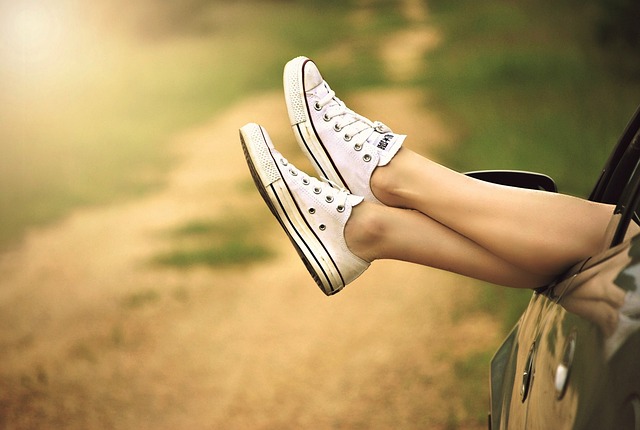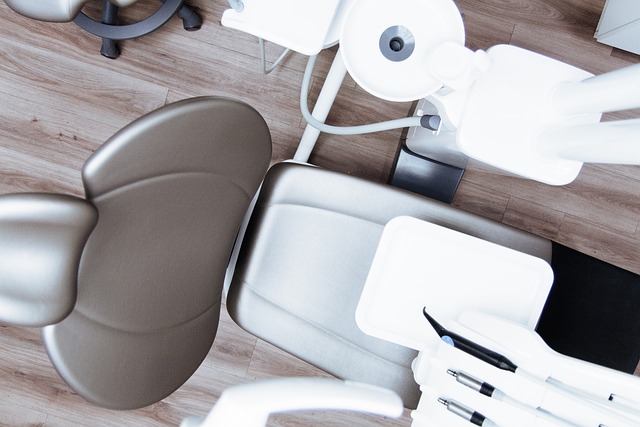Orthodontic Challenges: How to Stop Teeth from Moving Without Retainer
Have you ever wondered why teeth tend to shift and move after braces are removed, even though the treatment is complete? It can be frustrating to see your smile start to revert back to its original state. But fear not! In this article, we will delve into the world of orthodontic challenges and explore effective strategies to prevent your teeth from shifting without the use of a retainer. So, if you’re ready to discover the secrets behind maintaining that picture-perfect smile, let’s get started!
1. Understanding the Importance of Retainers: A Key Orthodontic Challenge
Retainers play a crucial role in orthodontic treatment, serving as a key challenge for both patients and orthodontists. These devices are designed to help maintain the alignment of teeth and prevent them from shifting back to their original positions. By wearing a retainer, patients can ensure that the results achieved through braces or other orthodontic appliances are maintained in the long term.
Understanding the importance of retainers involves recognizing their benefits and the potential consequences of not wearing them regularly. Retainers help stabilize the teeth in their corrected positions, allowing the surrounding tissues and bones to adjust and support the new alignment. Consistent retainer use also aids in preventing relapse, which refers to the teeth shifting back to their previous misaligned positions. By wearing retainers as prescribed by the orthodontist, patients can safeguard their orthodontic investment and enjoy a beautiful, straight smile for years to come.
- Retainers maintain the alignment of teeth after orthodontic treatment.
- They prevent teeth from shifting back to their original positions.
- Retainers stabilize teeth, allowing the surrounding tissues and bones to adjust.
- Consistent retainer use helps prevent relapse.
- Wearing retainers ensures the longevity of orthodontic results.
It is important to note that retainers need to be worn as instructed by the orthodontist to achieve the desired outcomes. Failure to wear retainers regularly can lead to relapse, requiring additional orthodontic treatment to correct the shifting of teeth. Therefore, it is crucial for patients to understand the significance of wearing retainers and to incorporate them into their daily oral hygiene routine.

2. Unveiling the Causes Behind Teeth Movement Post Orthodontic Treatment
After completing orthodontic treatment, it is not uncommon to notice some movement in your teeth. Understanding the causes behind this phenomenon can help you better manage and maintain the results achieved from your orthodontic treatment. Here are the key factors that contribute to teeth movement post orthodontic treatment:
- Age: As we age, our teeth naturally shift due to the continuous growth and changes in our jawbones. This can cause the teeth to move slightly, even after orthodontic treatment.
- Genetics: Your genetic makeup plays a significant role in determining the stability of your teeth. Some individuals may be more prone to teeth movement than others, regardless of orthodontic treatment.
- Oral habits: Certain habits such as excessive thumb sucking, nail biting, or tongue thrusting can exert pressure on the teeth, leading to their movement post orthodontic treatment.
- Retainer wear: Wearing retainers as prescribed by your orthodontist is crucial in maintaining the results of your treatment. Failure to wear retainers regularly can result in teeth shifting back to their original positions.
It is important to note that experiencing some degree of teeth movement after orthodontic treatment is normal. However, if the movement is significant or affects your bite, it is recommended to consult with your orthodontist. They can evaluate the causes behind the movement and provide appropriate guidance on how to address it. Remember, regular dental check-ups and maintaining good oral hygiene are essential in preventing any major shifts in your teeth alignment.

3. Exploring Alternative Methods: Preventing Teeth Shifting Without a Retainer
When it comes to preventing teeth shifting without a retainer, there are several alternative methods worth exploring. These options can help maintain the alignment of your teeth and prevent any unwanted shifting, even without the use of a retainer. Here are two effective methods:
1. Regular Dental Check-ups: Scheduling regular dental check-ups with your orthodontist can play a crucial role in preventing teeth shifting. During these visits, your orthodontist can monitor the alignment of your teeth and make any necessary adjustments. They can also identify any potential issues early on and provide appropriate treatment to prevent further shifting. By staying proactive with your dental care, you can minimize the risk of teeth shifting and maintain a beautiful smile.
2. Practicing Good Oral Hygiene: Maintaining good oral hygiene is not only important for your overall dental health but also for preventing teeth shifting. Brushing your teeth at least twice a day and flossing regularly can help remove plaque and bacteria that can contribute to teeth shifting. Additionally, using a mouthwash can further enhance your oral hygiene routine. By keeping your teeth and gums healthy, you are creating a stable foundation for your teeth, reducing the likelihood of shifting.

4. Orthodontic Expertise: Strategies to Maintain a Straight Smile Long-Term
When it comes to maintaining a straight smile long-term, orthodontic expertise plays a crucial role. Here are some strategies recommended by experts to help you keep your teeth aligned and beautiful:
- Regularly wear your retainer: After completing your orthodontic treatment, wearing a retainer is essential to prevent your teeth from shifting back to their original positions. Follow your orthodontist’s instructions and wear your retainer as directed.
- Maintain good oral hygiene: Brushing and flossing your teeth regularly is important for overall dental health, including maintaining a straight smile. Use a soft-bristled toothbrush and fluoride toothpaste to clean your teeth gently yet effectively. Don’t forget to floss daily to remove any plaque or food particles that may be trapped between your teeth.
- Avoid hard and sticky foods: Certain foods can put excessive pressure on your teeth, causing them to shift or become misaligned. Try to avoid biting into hard objects such as ice or hard candies. Similarly, sticky foods like caramel or chewing gum can also disrupt the alignment of your teeth.
In addition to these strategies, it is crucial to visit your orthodontist regularly for check-ups and adjustments. They can monitor your progress, make any necessary modifications to your treatment plan, and provide guidance specific to your dental needs. By following these expert-recommended strategies, you can maintain a straight smile and enjoy the long-term results of your orthodontic treatment.

5. Lifestyle Adjustments: Tips and Tricks to Keep Teeth in Place Naturally
Keeping your teeth in place naturally is not only essential for maintaining a healthy smile but also for preventing costly dental procedures in the future. Here are some lifestyle adjustments, tips, and tricks that can help you achieve just that:
- Maintain a consistent oral hygiene routine: Brush your teeth twice a day for two minutes using a soft-bristled toothbrush and fluoride toothpaste. Don’t forget to floss daily to remove plaque and food particles from between your teeth.
- Avoid bad oral habits: Chewing on ice, biting your nails, or using your teeth as tools can put unnecessary stress on your teeth, potentially causing them to shift or become loose. Break these habits to protect your smile.
- Wear a mouthguard: If you participate in sports or grind your teeth while sleeping, wearing a mouthguard can help protect your teeth from damage and keep them in their proper place.
- Maintain a balanced diet: A diet rich in vitamins and minerals, especially calcium and vitamin D, contributes to strong teeth and bones. Include dairy products, leafy greens, and fortified foods in your meals to support dental health.
Additionally, it’s important to schedule regular dental check-ups and cleanings with your dentist. They can identify any potential issues early on and provide professional cleaning to keep your teeth in their optimal position. Remember, small lifestyle adjustments can go a long way in keeping your teeth securely in place and ensuring a confident, healthy smile for years to come.
6. A Multifaceted Approach: Combining Retainer Alternatives for Optimal Results
In order to achieve optimal results, it is important to take a multifaceted approach when considering alternatives to traditional retainers. By combining different methods, individuals can maximize their chances of success and maintain the desired alignment of their teeth.
One effective alternative to traditional retainers is the use of clear aligners. These custom-made, removable trays are virtually invisible and can be easily taken out for eating, brushing, and flossing. Clear aligners gradually shift the teeth into the desired position, providing a discreet and convenient option for individuals seeking orthodontic treatment. Additionally, clear aligners are typically more comfortable than traditional braces, as they do not involve any metal wires or brackets.
- Another approach to consider is the use of lingual retainers. These retainers are placed on the backside of the teeth, making them completely invisible when smiling or talking. Lingual retainers are bonded to the teeth and provide a long-term solution for maintaining alignment. They are highly effective in preventing relapse and can be a suitable option for individuals looking for a discreet and permanent retainer alternative.
- For those who prefer a more traditional option, Hawley retainers are a popular choice. These retainers consist of a combination of acrylic and wire components. The acrylic portion fits snugly against the roof of the mouth or the bottom of the mouth, while the wire component wraps around the front teeth to hold them in place. Hawley retainers are adjustable and can be customized to fit the individual’s unique dental structure.
By combining the use of clear aligners, lingual retainers, and Hawley retainers, individuals can benefit from a comprehensive approach to retaining their newly aligned teeth. This multifaceted strategy provides flexibility, comfort, and long-term results, ensuring that the investment in orthodontic treatment is well-maintained.
7. Seeking Professional Guidance: When and How to Consult an Orthodontist for Teeth Stability
Consulting an orthodontist can be a crucial step in ensuring the stability of your teeth. Here are some situations where seeking professional guidance is highly recommended:
1. After orthodontic treatment: If you have recently completed orthodontic treatment such as braces or aligners, it is important to consult an orthodontist to ensure that your teeth remain stable and aligned. They can provide guidance on how to maintain the results achieved through the treatment, such as wearing retainers or following a specific oral care routine.
2. Experiencing shifting or relapse: If you notice any shifting or relapse of your teeth, it is advisable to consult an orthodontist. They can assess the cause of the movement and recommend appropriate measures to prevent further shifting. This may involve using additional orthodontic appliances or undergoing a short period of treatment to correct the issue.
3. Jaw pain or discomfort: If you experience persistent jaw pain or discomfort, it is important to consult an orthodontist. They can evaluate your bite and jaw alignment to determine if any orthodontic intervention is necessary to alleviate the pain or discomfort.
4. Bite problems: If you have difficulty biting or chewing, or if you notice an abnormal bite, it is recommended to seek professional guidance from an orthodontist. They can diagnose the underlying cause of the bite problem and recommend appropriate treatment options to improve your bite functionality.
Remember, seeking professional guidance from an orthodontist can help ensure the stability and overall health of your teeth. They have the expertise to address various orthodontic concerns and provide personalized treatment plans to meet your specific needs.
Frequently Asked Questions
Q: Why do teeth move after orthodontic treatment?
A: Teeth have a natural tendency to shift, even after orthodontic treatment. This happens because the tissues surrounding the teeth, such as the gums, bones, and ligaments, need time to adjust and stabilize after braces are removed.
Q: Can teeth shifting be prevented without using a retainer?
A: While it is challenging to completely stop teeth from moving without a retainer, there are certain measures that can help minimize shifting. These include maintaining good oral hygiene, avoiding habits that put pressure on the teeth, and regularly visiting your orthodontist for check-ups.
Q: How does good oral hygiene contribute to preventing teeth movement?
A: Proper oral hygiene, including regular brushing, flossing, and using mouthwash, helps maintain the health of your gums and bones. Healthy gums and bones provide better support to the teeth, reducing the chances of them shifting.
Q: What habits should be avoided to prevent teeth movement?
A: Habits such as nail-biting, chewing on pens or ice, and clenching/grinding teeth can exert pressure on the teeth, leading to their movement. By avoiding these habits, you can help minimize the risk of teeth shifting.
Q: Why are regular check-ups with an orthodontist important?
A: Regular check-ups with an orthodontist allow for the monitoring of any potential changes in your teeth alignment. They can identify early signs of shifting and provide appropriate guidance to prevent further movement.
Q: Are there any alternative methods to retainers for preventing teeth movement?
A: In some cases, orthodontists may suggest using other orthodontic appliances, such as clear aligners or fixed retainers, as an alternative to traditional removable retainers. These appliances can help maintain the alignment of your teeth without the need for constant retainer usage.
Q: Is it possible for teeth to shift back to their original position after orthodontic treatment?
A: Although teeth may have a natural tendency to shift, it is unlikely for them to revert to their original pre-treatment position. However, without proper retention, there is a possibility of minor changes in the alignment over time.
Q: How long should retainers be worn to prevent teeth movement?
A: The duration of retainer use varies from person to person, depending on individual factors and the complexity of the initial orthodontic treatment. Your orthodontist will provide specific instructions on how long you should wear your retainer to maintain the desired results.
Q: Can adults prevent teeth movement without using a retainer?
A: While it is more challenging for adults to prevent teeth movement without using a retainer, it is still possible to minimize shifting. The same preventive measures, such as good oral hygiene and avoiding habits that exert pressure on the teeth, should be followed diligently.
Q: What should I do if I notice my teeth shifting after orthodontic treatment?
A: If you notice any significant changes in your teeth alignment after orthodontic treatment, it is recommended to schedule an appointment with your orthodontist. They can evaluate the situation and suggest appropriate solutions to prevent further shifting.
Key Takeaways
In conclusion, orthodontic challenges can arise when attempting to prevent teeth from shifting without the use of a retainer. However, there are several key takeaways to keep in mind.
First, it is crucial to understand that teeth naturally have a tendency to move over time, even after orthodontic treatment. This is due to various factors, including age, genetics, and oral habits.
Second, maintaining good oral hygiene practices is essential in preventing teeth from shifting. Regular brushing and flossing, along with routine dental check-ups, can help keep your teeth in their desired positions.
Additionally, being mindful of certain habits that can contribute to teeth shifting is important. These may include thumb-sucking, nail-biting, or chewing on objects like pens or straws. By consciously avoiding such habits, you can minimize the risk of teeth movement.
Furthermore, it is worth noting that there are alternative methods to retainers that may help prevent teeth from shifting. These may include invisible aligners, which can provide a discreet and effective way to maintain your smile. Consulting with an orthodontist can help you explore these options and find the best solution for your specific needs.
In summary, while it may be challenging to stop teeth from moving without a retainer, understanding the natural tendencies of teeth, practicing good oral hygiene, avoiding certain habits, and exploring alternative methods can all contribute to maintaining a beautiful and aligned smile.






